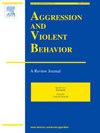Addressing cyberbullying in adolescents: A comprehensive meta-analytic evaluation of intervention programs
IF 3.4
2区 心理学
Q1 CRIMINOLOGY & PENOLOGY
引用次数: 0
Abstract
Cyberbullying can be considered one malady of our time. This meta-analysis investigates examines the effectiveness of intervention programs in reducing cyberbullying victimization (CV) and cyberbullying perpetration (CP) among adolescents. A comprehensive literature search was conducted using ProQuest Dissertation and Theses Global (PQDT), Scopus, PubMed, Web of Science, and Google Scholar. The search yielded 30 studies (kCV = 30; kCP = 31) for inclusion in the meta-analysis. Results indicated that the programs significantly reduced both CV (g = −0.331, p < .001) and CP (g = −0.454, p < .001) among adolescents. Moderator analyses revealed that gender composition and study design significantly moderated the effectiveness of interventions for both CV and CP. Specifically, programs involving samples with more than 50 % girls and those utilizing quasi-experimental designs showed greater effectiveness. In addition, active control groups and longer intervention durations significantly enhanced program outcomes for CP, although these factors did not significantly influence CV outcomes. These findings highlight the importance of participant characteristics, methodological rigor, and dosage in optimizing intervention success. Implications for researchers, educators, and mental health professionals developing cyberbullying intervention programs for adolescents are discussed.
解决青少年网络欺凌:干预方案的综合元分析评估
网络欺凌可以被认为是我们这个时代的一种弊病。本荟萃分析调查了干预方案在减少青少年网络欺凌受害(CV)和网络欺凌犯罪(CP)方面的有效性。使用ProQuest Dissertation and Theses Global (PQDT)、Scopus、PubMed、Web of Science和谷歌Scholar进行了全面的文献检索。检索得到30项研究(kCV = 30; kCP = 31)纳入meta分析。结果表明,该项目显著降低了青少年的CV (g = - 0.331, p < .001)和CP (g = - 0.454, p < .001)。调节分析显示,性别构成和研究设计显著调节了干预措施对CV和CP的有效性。具体而言,涉及超过50%的女孩样本和使用准实验设计的项目显示出更大的有效性。此外,积极的对照组和较长的干预时间显著提高了CP的项目结果,尽管这些因素对CV结果没有显著影响。这些发现强调了参与者特征、方法严谨性和剂量在优化干预成功中的重要性。对研究人员、教育工作者和心理健康专业人员开发青少年网络欺凌干预方案的影响进行了讨论。
本文章由计算机程序翻译,如有差异,请以英文原文为准。
求助全文
约1分钟内获得全文
求助全文
来源期刊

Aggression and Violent Behavior
Multiple-
CiteScore
7.50
自引率
4.30%
发文量
63
期刊介绍:
Aggression and Violent Behavior, A Review Journal is a multidisciplinary journal that publishes substantive and integrative reviews, as well as summary reports of innovative ongoing clinical research programs on a wide range of topics germane to the field of aggression and violent behavior. Papers encompass a large variety of issues, populations, and domains, including homicide (serial, spree, and mass murder: sexual homicide), sexual deviance and assault (rape, serial rape, child molestation, paraphilias), child and youth violence (firesetting, gang violence, juvenile sexual offending), family violence (child physical and sexual abuse, child neglect, incest, spouse and elder abuse), genetic predispositions, and the physiological basis of aggression.
 求助内容:
求助内容: 应助结果提醒方式:
应助结果提醒方式:


